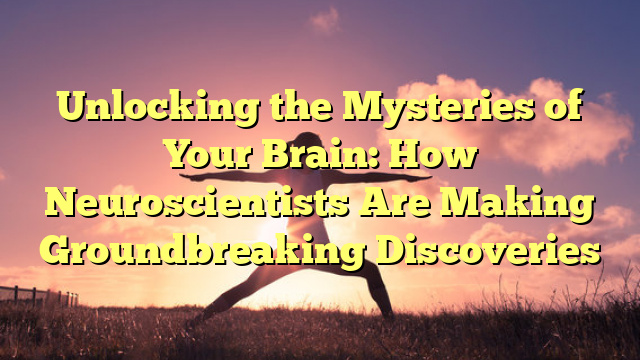Our brains are incredibly complex organs that control everything we do, from breathing to thinking to feeling emotions. But how exactly does the brain work? What mysteries lie hidden within its folds and crevices?
In this article, we will explore the inner workings of the brain, uncovering the secrets that make it such a fascinating and enigmatic organ. By understanding how the brain functions, we can gain insight into our own thoughts, behaviors, and emotions, unlocking the mysteries of our own minds.
The Structure of the Brain
The brain is made up of three main parts: the cerebrum, the cerebellum, and the brainstem. The cerebrum is the largest part of the brain and is responsible for higher cognitive functions such as reasoning, problem-solving, and memory. The cerebellum is located at the back of the brain and is involved in coordinating movement and balance. The brainstem sits at the base of the brain and controls basic functions such as breathing and heart rate.
Neurons and Synapses
At the core of the brain's functioning are billions of neurons, specialized cells that transmit electrical and chemical signals throughout the brain. Neurons communicate with each other at junctions called synapses, where they release neurotransmitters that pass signals from one neuron to the next. This intricate network of neurons and synapses allows the brain to process information, form memories, and regulate emotions.
Brain Waves and Communication
The brain generates electrical impulses known as brain waves, which can be measured using techniques such as electroencephalography (EEG). These brain waves are categorized into different frequencies, each associated with different states of consciousness. For example, beta waves are associated with wakefulness and alertness, while delta waves are typically seen during deep sleep.
Memory and Learning
The brain is also responsible for storing and retrieving memories, a process that involves complex interactions between different parts of the brain. Short-term memories are stored in the hippocampus, a seahorse-shaped structure located in the brain's temporal lobe, while long-term memories are consolidated in the cerebral cortex, the brain's outer layer. Learning involves forming new connections between neurons, a process known as neuroplasticity.
Emotions and the Brain
The brain plays a crucial role in regulating emotions, with different parts of the brain responsible for different aspects of emotional processing. The amygdala, for example, plays a key role in processing fear and other negative emotions, while the prefrontal cortex helps regulate emotional responses and make decisions based on emotional cues. Imbalances in these brain regions can lead to mood disorders such as depression and anxiety.
Conclusion
In conclusion, the brain is a marvel of nature, capable of incredible feats of cognition, emotion, and memory. By unlocking the mysteries of the brain and gaining a deeper understanding of how it works, we can better appreciate the complexities of our own minds and the beauty of human consciousness.
FAQs
1. How can I improve my memory?
To improve your memory, try engaging in activities that challenge your brain, such as puzzles, games, and learning new skills. Getting enough sleep, eating a healthy diet, and exercising regularly can also help support cognitive function.
2. Can the brain repair itself after injury?
The brain has a limited ability to repair itself after injury, a process known as neuroplasticity. With rehabilitation and therapy, the brain can sometimes form new connections and compensate for damaged areas.
3. What role do neurotransmitters play in brain function?
Neurotransmitters are chemical messengers that transmit signals between neurons, influencing a wide range of functions such as mood, memory, and sleep. Imbalances in neurotransmitter levels can contribute to mental health disorders.
Unlock Your Mental Potential



